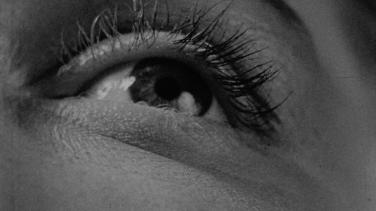An anthology of American experimental cinema curated by the researcher Bruce Posner.

Avid eyes is an anthology of American experimental cinema curated by the researcher Bruce Posner and organized by the Museo Nacional Centro de Arte Reina Sofía. A historical selection of 37 films, many of them unknown and recently restored, which tracks the many paths drawn by avant-garde cinema over six decades: from incursions by artists such as Fernand Léger and Marcel Duchamp in the 20s to the visual and sound experiments of Oskar Fischinger and Mary Ellen Bute, the documentary views of Paul Strand, Helen Levitt and Tom Palazzolo or the unique poetic filmmakers, such as James Broughton, Bruce Baillie, Marie Menken and Maya Deren.
According to Walter Benjamin, the viewer accesses their “optical unconscious” through the functions of the eye and the camera’s ability to capture and pinpoint something transparent, invisible or elusive in everyday life. For Benjamin, this is the basic experience of cinema, based on the fascination it produces, and one of the driving forces behind avant-garde cinema across the 20th century. At the core of experimental film a search for responses to these agitations of the eye are discerned, a desire to transcend reality – this eye, conceived as the visual organ belonging to a hungry and non-conformist viewer, determines the films that make up this series.
The selection centres on the productions of different generations of film-makers working out of the United States, where the early reception of the avant-garde and its transformation into outsider film converges with classical cinema, albeit whilst moving in the opposite direction. The 1920s mark the start of the programme, and the 1960s its end point and the advent of video practices and the subsequent reframing of specific roles in the medium of film. The productions in this series express concepts, feelings, moods and productions of intellect in absolute visual terms, and all have diverse principles in common: a recurrence to poetry as a model, the use of visual tools, the rejection of a narrative thread, the challenge to temporal logic and, above all, the mode of production and personal distribution.
Just as poetry feeds prose without disappearing altogether, these films reflect the resistance of a series of film-makers who were aware they were clutching an instrument of thought. In hindsight, Maya Deren would write: “I thought about how interesting it would be to use film differently. Until then, it had been used as if it were a novel telling a story, or as a documentary. Between those two poles there was nothing, and I wanted to use film as a poetic medium […]”. Thus, the murmurings from César Vallejo’s poetry becomes apparent, and runs through the whole series: “Avid eyes, but from poetry!”.
The season is part of our line of work for presenting the public of Tabakalera with the ABC (origins, fundamental works and proper names) of the history of experimental cinema.
In collaboration with:

